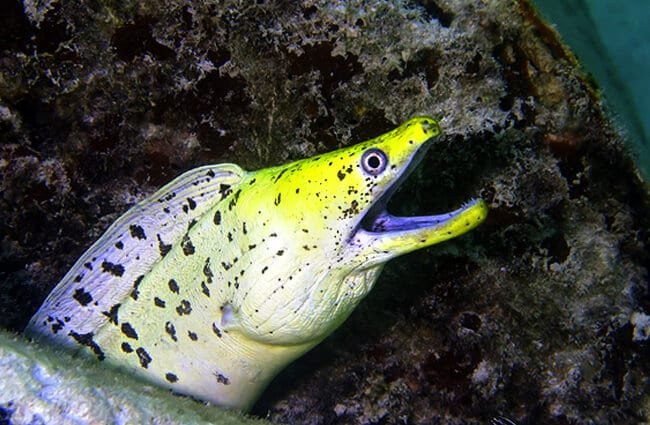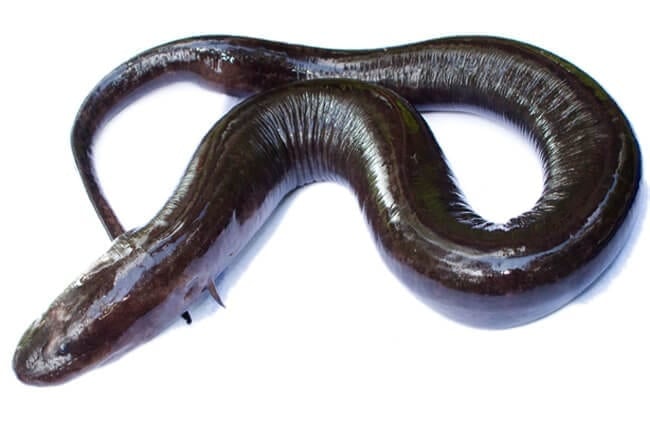Unveiling the Conger Eel: A Deep Dive into the Ocean’s Mysterious Predator
The ocean depths harbor creatures of incredible adaptation and mystery, and among them stands the conger eel. Often overlooked, these fascinating fish are powerful predators and play a crucial role in marine ecosystems. This comprehensive guide explores the world of the conger, covering its biology, behavior, habitat, and relationship with both the environment and humankind.

What Exactly is a Conger Eel?
The term "conger" refers to a group of large marine eels belonging to the family Congridae. While many different species exist, the most well‑known is the European conger (Conger conger), found throughout the Eastern Atlantic. These are not to be confused with freshwater eels, although they are related. Congers are characterized by their elongated, snake‑like bodies, lack of scales, and powerful jaws.
Physical Characteristics
Congers are among the largest eels in the world. European congers can reach lengths exceeding 3 meters (almost 10 feet) and weigh over 100 kilograms (220 pounds). They possess a dorsal fin that runs almost the entire length of their body, blending seamlessly with the caudal fin. Their coloration typically ranges from grayish to brownish, providing effective camouflage within their rocky habitats. Their flesh is rich in vitamin A, which historically led to their consumption for nutritional and medicinal purposes.
Habitat and Distribution
Conger eels are widely distributed throughout temperate and tropical oceans worldwide. They prefer rocky reefs, caves, and wrecks, utilizing these structures for shelter and ambush predation. They are benthic dwellers, meaning they primarily live on or near the seafloor. While they can tolerate a range of temperatures, they generally thrive in cooler waters. European congers are predominantly found in the Eastern Atlantic, from Norway to the Mediterranean Sea and West Africa. Other species inhabit the Pacific and Indian Oceans.

Diet and Hunting Strategies
Conger eels are formidable predators with a diverse diet. They are opportunistic feeders, consuming a wide range of prey including fish, crustaceans, squid, and even other eels. Their hunting strategy relies heavily on ambush predation. They lie in wait within rocky crevices or caves, and when unsuspecting prey ventures too close, they strike with incredible speed and power. Their jaws are equipped with sharp teeth that help secure their catch. They are known to swallow their prey whole, utilizing their flexible bodies to accommodate large meals. They are not actively chasing prey, instead relying on their camouflage and speed to capture it.
Reproduction and Life Cycle
The reproductive life of the conger eel remains largely mysterious, particularly concerning the location of spawning grounds. It is believed that they undertake long migrations to deep ocean areas for spawning. The eggs are pelagic, meaning they float freely in the water column. The larvae are ribbon‑like and undergo a complex metamorphosis, gradually developing into the familiar eel shape. It is theorized that they reproduce only once in their lifetime. Growth rates are relatively slow, and they can live for several decades. The exact age of maturity and lifespan varies depending on the species and environmental conditions.

Congers in the Ecosystem
Conger eels play a significant role in maintaining the balance of marine ecosystems. As apex predators, they help regulate populations of their prey species. They also serve as a food source for larger predators, such as sharks and marine mammals. Their presence indicates a healthy and diverse ecosystem. Furthermore, their burrowing activity can aerate sediments and contribute to nutrient cycling. Their rocky reef habitat is also a home to other sea creatures, making the conger a vital component of its community.
Interactions with Other Animals
Beyond predator‑prey relationships, conger eels sometimes exhibit commensal relationships with other species. For example, smaller fish may seek shelter within the conger’s burrow, benefiting from protection without affecting the eel. Occasionally, they engage in cleaning symbiosis, where smaller fish remove parasites from the conger’s skin. Congers, however, are territorial and will defend their burrows against intruders, including other eels.

Congers and Humans
Throughout history, conger eels have been utilized by humans for various purposes. Their meat is considered a delicacy in some cultures, particularly in Japan (where they are known as "anago" and used in sushi) and parts of Europe. Historically, their skin was used for leather production, and their oil was valued for its medicinal properties. However, overfishing and habitat destruction pose threats to conger populations in certain areas.
Conservation Status and Threats
While not currently considered globally endangered, several conger species face localized threats. Overfishing, especially by bottom trawling, can damage their habitat and deplete populations. Pollution, including chemical runoff and plastic debris, also poses a significant risk. Climate change, leading to rising sea temperatures and ocean acidification, further exacerbates these threats. Sustainable fishing practices and habitat protection are crucial for ensuring the long‑term survival of these fascinating creatures.

Encountering a Conger Eel: A Guide
If you are a diver or snorkeler, you might encounter a conger eel in its natural habitat. These creatures are generally shy and will retreat into their burrows if disturbed. It is important to observe them from a respectful distance and avoid any attempts to touch or harass them. If you happen upon a conger eel while fishing, it is best to release it back into the water unharmed.
Caring for Congers in Captivity
Maintaining a conger eel in captivity requires a substantial commitment and specialized facilities. They need a large tank with plenty of rocky structures to provide shelter and simulate their natural habitat. Maintaining proper water quality is crucial, as they are sensitive to pollutants. Their diet should consist of a variety of fresh or frozen fish and crustaceans. Congers are nocturnal animals, so they require a dark and quiet environment. Avoid overcrowding, as they can be territorial.

Fascinating Conger Facts
- Conger eels possess a remarkable ability to regenerate lost fins.
- They can survive for extended periods without food.
- Conger burrows often serve as shelter for other marine organisms.
- They can detect electrical signals emitted by potential prey.
The conger eel, a creature of stealth and power, remains a captivating enigma of the ocean depths. By understanding its biology, behavior, and ecological role, we can appreciate its importance and contribute to its conservation for generations to come.

![Red Angus Closeup of a beautiful Red Angus cowPhoto by: U.S. Department of Agriculture [pubic domain]https://creativecommons.org/licenses/by/2.0/](https://animals.net/wp-content/uploads/2020/03/Red-Angus-4-238x178.jpg)




![Red Angus Closeup of a beautiful Red Angus cowPhoto by: U.S. Department of Agriculture [pubic domain]https://creativecommons.org/licenses/by/2.0/](https://animals.net/wp-content/uploads/2020/03/Red-Angus-4-100x75.jpg)

